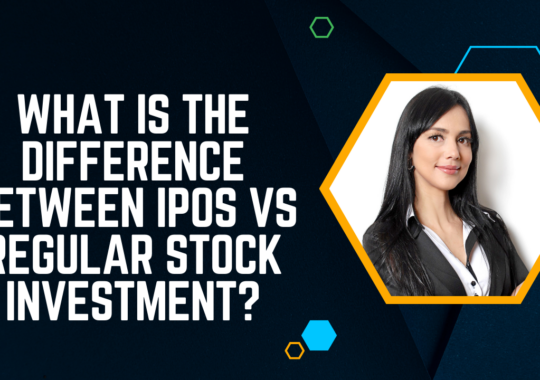The Initial Public Offering (IPO) process is a pivotal moment in a company’s journey, marking its transition from private to public status. Understanding how IPOs work is crucial for investors seeking to capitalize on early opportunities and potentially make profits. This exploration delves into the mechanics of IPOs, unraveling the stages from company decision to go public to the trading of shares on the open market. By dissecting this process and examining strategic approaches, we aim to provide insights into how investors can navigate the intricacies of IPOs, seize profitable opportunities, and make informed decisions in the dynamic landscape of initial public offerings.

The IPO Mechanism: How Does the Initial Public Offering Process Unfold?
The Initial Public Offering (IPO) process is a meticulous journey that transforms a privately held company into a publicly traded entity. The unfolding of this mechanism involves several distinct phases. Before entering the public market, a company’s leadership must decide to go public. This decision initiates extensive preparation, involving financial audits, regulatory compliance, and strategic planning.
The company collaborates with underwriters who facilitate the IPO by assisting with documentation, determining the offering price, and handling regulatory filings. The company then registers with the Securities and Exchange Commission (SEC). A critical phase, the roadshow involves company executives presenting the business to potential investors. This marketing effort aims to generate interest and support for the upcoming IPO. The offering price is set based on market demand, and shares are allocated to institutional and retail investors. Pricing appropriately is crucial to attract investors while ensuring fair value. The IPO culminates in the company’s shares being traded on the open market. The first day of trading is a critical juncture, often marked by initial price fluctuations driven by market sentiment.
Why Do Businesses Choose to Go Public via IPOs?
The decision for businesses to go public through Initial Public Offerings (IPOs) is a strategic move that goes beyond immediate capital infusion. Several motivations drive this choice. Going public provides businesses with access to a broader pool of capital. The sale of shares generates funds that can be utilized for expansion, innovation, debt reduction, or other strategic initiatives. IPOs offer a means for companies to attract and retain top talent by providing employees with stock options. This aligns employee interests with company success and fosters a sense of ownership.
Publicly traded companies often enjoy increased visibility and credibility. A listing on a stock exchange can attract attention from customers, partners, and other stakeholders, contributing to market recognition. Public companies have a more liquid stock, facilitating potential mergers and acquisitions. Using stock as a form of currency can make deals more attractive to other businesses. Going public establishes a market value for the company, which can be beneficial for acquisitions, partnerships, and establishing a benchmark for overall company performance.
From Private to Public: Changes for a Company Going Through an IPO
The transition from a private to a public company through an Initial Public Offering (IPO) brings about transformative changes that reshape the dynamics of the business. Public companies face heightened regulatory scrutiny and are required to disclose comprehensive financial information regularly. Transparency becomes a cornerstone, impacting how the company operates and communicates.
The IPO process elevates a company’s visibility, attracting attention from investors, analysts, and the media. This heightened profile can contribute to increased brand recognition and market credibility. This involves regular communication, shareholder meetings, and a commitment to maximizing shareholder value. IPOs often bring employee equity participation to the forefront. Employee stock options can become a valuable component of compensation, aligning employee interests with the company’s performance. Being publicly traded offers strategic flexibility, providing the company with a liquid stock currency for acquisitions, mergers, and partnerships.
Market Debut Dynamics: How Are IPO Share Prices Determined?
The determination of Initial Public Offering (IPO) share prices is a dynamic and intricate process influenced by various factors that shape market debut dynamics. Investment banks, acting as underwriters, play a crucial role in determining the IPO share price. Extensive valuation exercises, considering the company’s financials, market conditions, and industry benchmarks, guide this process.
The level of interest and demand from investors during the IPO roadshow influences pricing. Strong demand often leads to higher pricing, reflecting positive investor sentiment. The bookbuilding process allows institutional investors to express interest in shares at different price levels.
Profit Potential: Unveiling Strategies for Investors to Capitalize on IPO Opportunities
Participating in Initial Public Offerings (IPOs) offers investors a pathway to potential profits, but strategic approaches are crucial to maximize returns in this dynamic landscape.
- Early Entry Advantage: Investing in IPOs allows for early entry into a company with growth potential. Early investors may benefit from favorable share prices that have not yet fully reflected the company’s future prospects.
- Market Timing and Fluctuations: Profits can be realized by strategically timing the market. Investors who accurately gauge market sentiment and anticipate fluctuations may buy at lower prices during periods of uncertainty and sell at higher prices during market upswings.
- Long-Term Growth: Investors can realize profits by holding onto IPO shares for the long term. If the company continues to demonstrate strong performance and growth, shareholders may benefit from sustained value appreciation.
- Participating in High-Profile IPOs: High-profile IPOs often attract significant market attention. Participating in these offerings provides an opportunity to capitalize on the initial surge in investor interest and potential price appreciation.
- Diversification and Risk Mitigation: Including a mix of IPOs in a diversified portfolio helps spread risk.
The Potential Gains and Losses in IPO Investments
Investing in Initial Public Offerings (IPOs) presents a spectrum of potential gains and losses, emphasizing the need for investors to navigate the nuanced landscape with prudence.
-
Potential Gains:
- Early-Stage Growth: IPOs offer access to companies in their early stages, providing investors with the potential to capitalize on substantial growth as the business expands.
- Capital Appreciation: Successful IPO investments can yield significant capital appreciation, especially if the company’s stock price experiences upward momentum post-listing.
- Market Enthusiasm: High-demand IPOs can create an initial surge in share prices, allowing early investors to realize profits as market enthusiasm drives valuations.
-
Potential Losses:
- Market Volatility: IPOs are often characterized by initial price volatility. Fluctuations in market sentiment can lead to abrupt changes in share prices, resulting in potential losses for investors.
- Underperformance: Some IPOs may underperform due to various factors, such as poor financial performance, industry challenges, or shifts in market dynamics, leading to diminished returns.
- Lock-Up Expirations: Lock-up periods restrict early investors from selling their shares immediately. Once these restrictions expire, increased selling pressure can negatively impact share prices.
Long-Term Strategies Lead to Post-IPO Profits
Post-IPO profits are often contingent on strategic, long-term investment approaches that extend beyond the initial market debut. Adopting a patient holding strategy allows investors to weather short-term market fluctuations and capitalize on the company’s growth trajectory over an extended period. Long-term commitment can yield substantial profits as the business matures.
Reinvesting profits strategically enables investors to compound returns. Identifying opportunities for reinvestment, whether within the same company or in other promising ventures, contributes to long-term wealth creation. Regularly reviewing and adjusting the portfolio ensures alignment with evolving investment goals. Assessing the ongoing potential of post-IPO stocks and making informed decisions based on changing circumstances is integral to long-term success.
Conclusion
In conclusion, adopting a strategic and patient approach is paramount for investors navigating the post-IPO landscape. While the allure of immediate gains exists, long-term profitability hinges on thorough analysis, diversification, and a commitment to patient holding. By embracing fundamental principles, such as continuous monitoring, reinvestment, and portfolio review, investors can unlock the full potential of post-IPO stocks. Success in the dynamic world of public markets demands a balance of adaptability and foresight, allowing investors to navigate fluctuations and capitalize on the enduring growth of companies post their Initial Public Offering.
Also Read:



